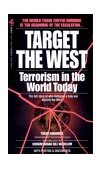|
|
Fidayeen: The Chickens Come
Home to Roost
Kanchan Lakshman
There is tragic irony here: fidayeen (suicide cadres) have for years been
mobilized, ideologically motivated and trained in Pakistan for export in the
neighbourhood - particularly to Jammu & Kashmir (J&K) in India, and to
Afghanistan - as well as further afield, to South East Asia, Iraq, Chechnya, and
the many other and multiplying loci of Islamist extremist terror. J&K had
witnessed the first suicide attacks in 1999, and since then there has been a
steady stream of fidayeen operations. Supported by the national political
ethos that actively encouraged and sponsored jehad and shahadat,
these suicidés had, however, till recently excluded their home ground in
Pakistan from the scope of their 'holy war'. But, even as fidayeen
attacks decline sharply in J&K, Pakistan appears to be emerging as a favoured
target. Thus, while J&K witnessed six fidayeen attacks so far in the
current year, with a total of 29 fatalities, 86 people have been killed in at
least seven fidayeen attacks within Pakistan.
Massoud Ansari writing in the Karachi-based Newsline in June 2004 had
noted that a "clandestine call for potential 'fidayeen' - suicide bombers
- is circulating across Pakistan and dozens of youth have answered its summons."
Since 2002, there have been at least 11 suicide attacks in Pakistan. Suicide
attacks during the current year include:
October 10: A suicide bomber blew himself up at a Shia mosque in the
Mochi Gate area of Lahore, killing at least five people, including two children.
October 1: At least 31 people are killed and 75 others sustain injuries
in a suicide bombing at a Shia mosque at Sialkot in the Punjab province during
the Friday prayers.
July 30: Seven persons, including the attacker, are killed in a suicide
bomb attack on the car of the then Prime Minister-designate, Shaukat Aziz, at
Fateh Jang.
June 3: A suspected Uzbek operative of the
Al Qaeda and a
soldier of the Shawal Scouts are killed in a suspected suicide attack, while two
soldiers sustain injuries at a check-post in the North Waziristan agency, close
to the Afghanistan border.
May 31: At least 24 worshippers are killed and 34 others sustain injuries
during an attack which occurred while evening prayers were in progress at a Shia
mosque situated on the MA Jinnah Road in Karachi.
May 7: At least 15 Shia worshippers and a suspected suicide bomber died
and over 200 persons sustained injuries when a powerful bomb exploded at Hyderi
Mosque, situated within the premises of the seminary Sindh Madrasa-tul-Islam, in
the Mithadar area of Karachi.
February 28: A suicide bomber is killed and four worshippers sustain
injuries in an attack on a mosque in the Satellite Town area of Rawalpindi.
The current wave of suicide attacks, according to many Pakistani analysts, needs
to be viewed within the context of Pakistan's alliance with the US and Al
Qaeda's reach within that country. A cursory look at the pattern of Fidayeen
attacks in Pakistan indicate that they possess several Al Qaeda traits, such as
the use of a suicide bomber, the targeting of Western civilians, the absence of
immediate claims of responsibility and the quantity of high explosives utilised.
A scrutiny of the pattern also reveals that the targets have been varied:
foreigners, Christians, Shias, prominent individuals within the current regime,
including General Musharraf himself.
Foreigners in Pakistan have been among the early targets of the fidayeen.
Five people, including the suicide bomber and the wife of an American diplomat,
died during a suicide attack on the Protestant International Church in Islamabad
on March 17, 2002. On May 8, 2002, nine French engineers and five Pakistanis,
including the suspected suicide bomber, were killed during an attack that
targeted the Sheraton Hotel in Karachi. More recently, three Chinese engineers
were killed and eleven persons injured in a suspected suicide attack at the
Gwadar Port on May 3, 2004.
High-profile targets of the fidayeen have included, among others,
President Musharraf, Prime Minister Shaukat Aziz. On December 25, 2003, at least
18 persons were killed and 40 others sustained injuries during a second
assassination attempt in less than two weeks on President Musharraf in the
Jhanda Chichi area of Rawalpindi (the first attempt, using explosive devices on
a bridge on the President's route, had occurred on December 14). And on July 30,
2004, seven persons, including the attacker, were killed in a suicide bomb
attack on the then Prime Minister-designate Aziz's cavalcade, in Fateh Jang town
of the Punjab province.
The increasing deployment of fidayeen and the legitimization of suicide
attacks is disturbing at another level as well. There have been reports that Al
Qaeda operatives have infiltrated into Pakistani security agencies. For
instance, a constable of the Karachi Police is alleged to have been the suicide
bomber in the May 7, 2004-attack in which 15 members of the Shia community died
at the Haideri mosque in Karachi. Earlier, a local intelligence official,
Muhammad Naeem, was arrested in Islamabad on January 11, 2004, for allegedly
tipping off the two suicide bombers who tried to crash their explosive laden
vehicles into President Musharraf's convoy at Rawalpindi on December 25, 2003.
Such penetration of security agencies is evidently insidious and adds to the
overwhelming burden of the beleaguered enforcement agencies in Pakistan. The
Karachi Police, for instance, is reported to have more than 7,000 policemen
engaged in unsanctioned security duties at 2,223 mosques/ imambargahs, 869
Madrassas, 103 foreign missions, 31 food chains, 205 vital installations, 84
temples, 213 churches/hotels, 99 multinational companies and 277 petrol pumps,
besides individual security duty. An already harried security apparatus,
according to current indications, is finding it hard to confront the fidayeen,
as has been the case in other theatres of Islamist extremist violence.
Massoud Ansari discloses that, while several networks of potential suicide
bombers have been neutralised in a series of raids, officials admit that they
are ill-equipped, in terms of infrastructure, expertise and training and that
"there are so many cells that it is difficult to eliminate all of them."
Unsurprisingly, some signs of desperation are emerging within the regime
structure. At a meeting with Muslim clerics at Rawalpindi on October 15, 2004,
President Pervez Musharraf and Prime Minister Shaukat Aziz urged the Mullahs
to consider issuing a decree that suicide attacks on mosques and
imambargahs were 'un-Islamic'. After the meeting, the Coordination Secretary
of the Ithad-e-Tanzimat-e-Madars-e-Dinya, Qari Hanif Jalandhry, said "the
mullahs made it clear to the President and the Prime Minister that they
would only consider it," because they would have to consult scholars authorised
to issue such decrees. However, Minister of State for Religious Affairs, Dr.
Amir Liaqat Hussain, told a private television channel that the clerics had
'pledged' they would issue a decree declaring suicide attacks on Shia and Sunni
mosques 'un-Islamic'.
The problem may not, however, go away quite as easily. The authority of
mullahs endorsing the state's dictates is easily rejected by the more
radical community - as has been the case in most theatres of Islamist extremism,
including Saudi Arabia - and the processes of recruitment and training of
suicide cadres has survived many such fatwas by clerics contemptuously
dismissed as serving a corrupt state.
The outlawed Jaish-e-Mohammed (JeM)
is widely believed to be the first group to have introduced suicide attacks in
Pakistan. The advent of suicide attacks in Pakistan also coincides with the US
attacks on Afghanistan and the subsequent flight of many Taliban/Al Qaeda cadres
to Pakistan. And arguably the most lethal attack thus far in J&K was carried out
by the JeM, when its cadres targeted the State Legislative Assembly complex in
Srinagar with an explosives laden vehicle killing 36 persons and wounding 24
others, on October 1, 2001. It is significant, however, that suicide operations
in J&K were first initiated by the Lashkar-e-Toiba (LeT),
and it is this group that has been responsible for the largest number of such
attacks in the Indian State. The LeT's loyalties to the ISI and the military
regime apparently still survive in sufficient measure to prevent them from
attacking targets within Pakistan.
Official sources have noted that a majority of the fidayeen hail from the
North West Frontier Province (NWFP) and Balochistan, as also cities like
Karachi. Most of them are young males, usually aged between 16 to 20 years.
Thus, the suicide bombing at the US Consulate in Karachi was allegedly carried
out by a 17-year old youth, and Asif Zaheer, who blew himself up near the
Sheraton Hotel, was reportedly 19.
While the concept of front-line female suicide cadres is still in the realm of
the unusual, the Karachi Police were placed on a high security alert in July
2004 after intelligence reports that two suicide-bomber sisters, aged between 18
and 20 years, were planning to launch strikes on Government targets. The
specific threat was identified after an arrested cadre of the outlawed Sunni
group Lashkar-e-Jhangvi (LeJ),
Gul Hasan, confessed that he had motivated his two cousins to become suicide
bombers. Hasan, who is alleged to have prepared the suicide bombers who attacked
the Hyderi mosque on May 7 and another mosque in Karachi on May 31, had
reportedly disclosed during interrogation that the LeJ had brainwashed a few
girls to explode themselves in women's areas of Shia mosques wearing a veil or
school uniform and carrying handbags. Elsewhere, authorities in NWFP were
pursuing the widow of an Uzbek Islamist terrorist in May 2004, after an
intelligence report suggested that she was training women suicide bombers.
Intelligence had indicated that Aziza, the widow of Obaidullah, who was a member
of the Islamic Movement of Uzbekistan, would launch attacks in Pakistan in May.
There has been considerable concern in the West with regard to the rising wave
of suicide attacks, especially in the context of the cadres' motivation levels
and the global Pakistani footprint of terror. Joseph Farah's G2 Bulletin,
an online intelligence and news service, indicated in September 2004 that
President Musharraf, apparently under American pressure, has instructed security
agencies to focus on jehadi suicide volunteers - this time due to a memo
asserting that such cadres would be used to carry weapons of mass destruction (WMD),
and detailing various options for such attacks. It is certainly plausible that
jehadi groups linked to bin Laden would seek to employ mass destruction
'human bombs' - biological, chemical and radiological - in the foreseeable
future. To the extent that the ostensibly US-friendly Musharraf regime is losing
control over terrorist groups within Pakistan - and, indeed, itself being
targeted by them - the danger of a spillover into Western theatres becomes the
more acute, particularly in view of the fact that their dominant ideological
motivation now comes, not from handlers within Pakistan's Inter Services
Intelligence (ISI), but from the Al Qaeda and its affiliates.
Courtesy:
South Asia Terrorism Portal |


